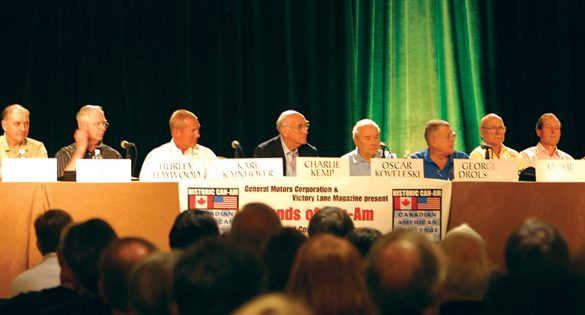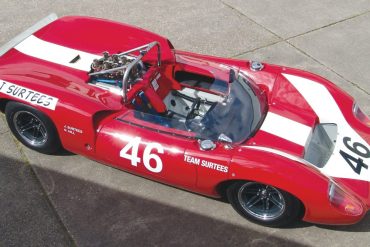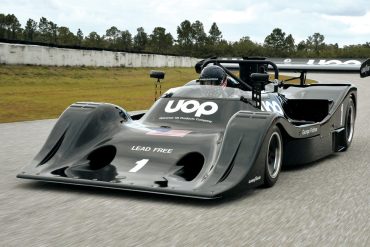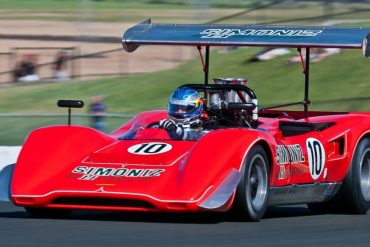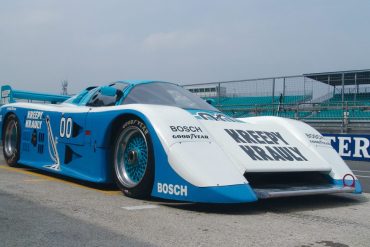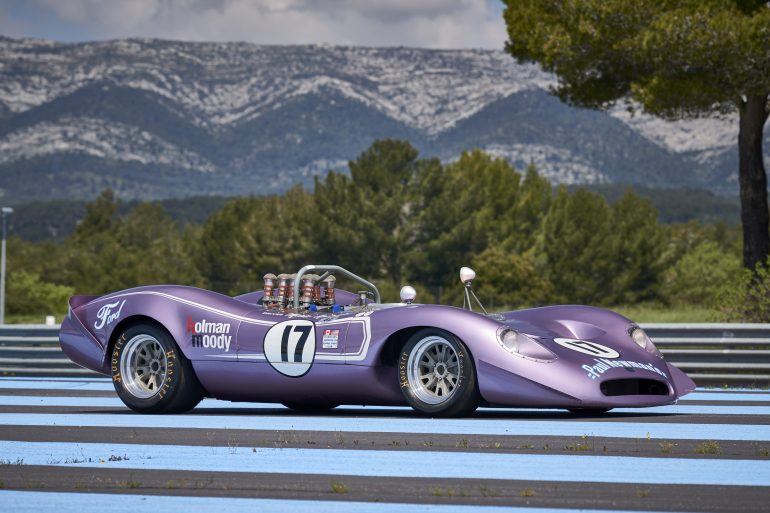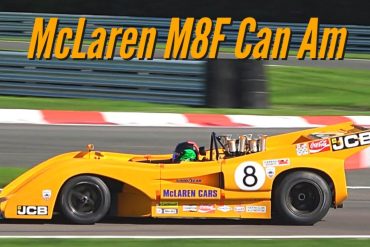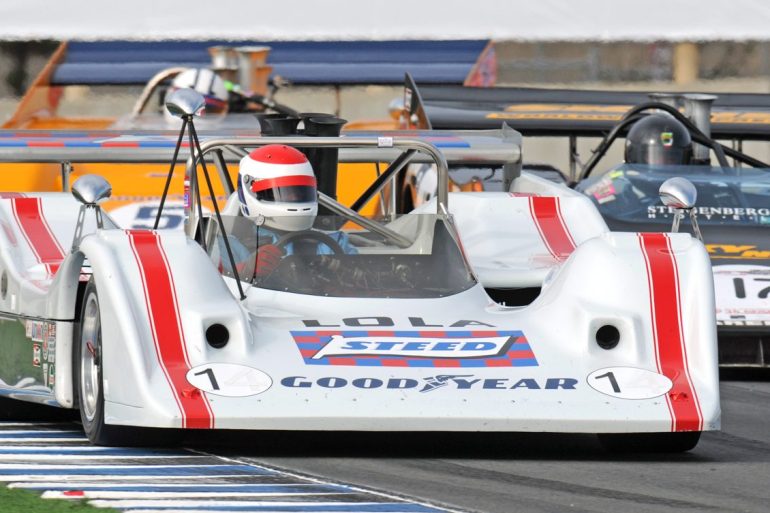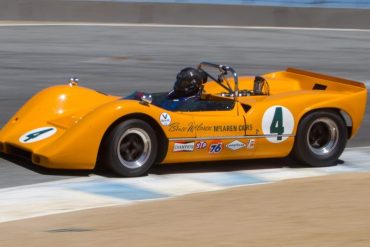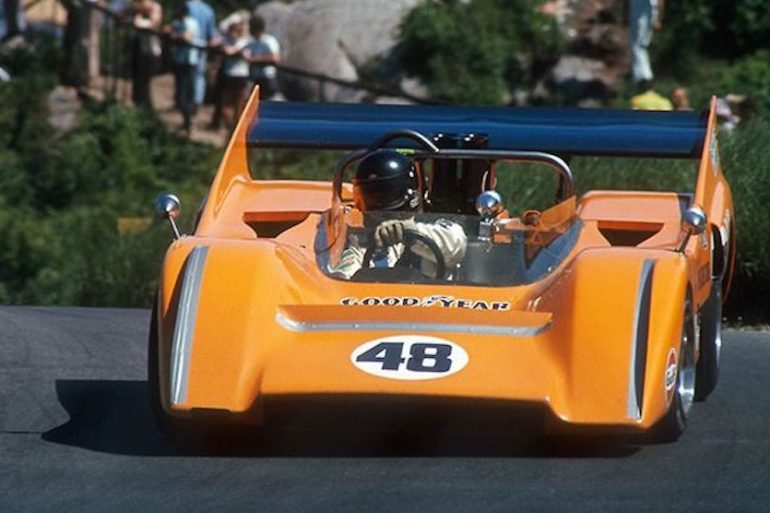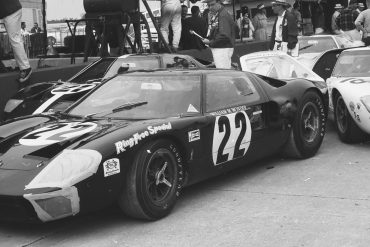When the sports car scene started to heat up again in ’65-’66, I went to work for Motorsport Design in Connecticut, and we built a McLaren M6A for John Cannon. After that I was hooked on the Can-Am so I moved back to California, when I became Peter Revson’s mechanic...
Formula 5000
Coming soon
For 1965, the SCCA (Sports Car Club of America) created three new single-seater formulae: Formula A, for 3-litre racing engines, Formula B (later better known as Formula Atlantic) for 1.6-litre production-based ('stock block') engines and Formula C for 1.1-litre engines. The capacities chosen matched the forthcoming 1966 Formula 1 (3-litres), the planned 1967 Formula 2 (1.6-litres) and the long-established Formula Junior (1.1-litres) but they also had a long tradition of use in American racing, 183 cubic inch (3-litre) having replaced 302 ci (5-litre) as the capacity limit at the Indianapolis 500 as long ago as 1920.
With the 3-litre F1 not yet in force, Formula A attracted hardly any worthwhile entries in its first few seasons. The SCCA national championship for FA was not even competed in 1965 so the first national champion in Formula A was Harry McIntosh in 1966 who beat a paltry field in his ex-F1 1.5-litre Brabham BT7 (F1-2-63). The following year Chuck Kirkbride won in a Lotus 18 (372) but he was the only finisher in his class and some three laps behind the best Formula B car. A lucrative professional series started in 1967 but was dominated by FB cars.
For 1968, the SCCA opened up Formula A to stock block engines of up to five litres, thus allowing in the 302ci Chevrolet engine that had been introduced for the SCCA's Trans-Am series. Major racing car constructors now built cars for the 5-litre rules, notably Eagle, winners in 1968 and 1969; McLaren, winners with the M10B in 1970 and 1971; Chevron whose B24 model won the British and Tasman series in 1973/74 and Lola, dominant from 1974 to 1976 with the classic T332.
Meanwhile, a British F5000 series was launched in 1969 and the South African, New Zealand and Australian national championships were opened to F5000 cars in 1968, 1969 and 1971 respectively.
After six seasons where F5000 racing seemed to have taken over the world, the decline was very rapid. The South Africans went first, adopting Formula Atlantic for 1976, New Zealand went the same way early in 1976, the US series was dropped at the end of that year and the British series turned into the British F1 series in 1977 and ejected the last F5000 cars after 1978. Australia held out, their unchanged cars carrying on until early 1982.
The US Formula 5000 series was replaced by Single Seat Can-Am for 1977, giving good work to sports-car-bodied Lola T330/T332 cars right up to 1986.
[adrotate group ="5"]

Formula 5000 Heritage
Formula 5000 (or F5000) was an auto-racing series that ran in the various countries around the world from 1968 to 1982. It was originally intended as a low-cost series aimed at open-wheel racing cars that no longer fit into any particular formula. The '5000' denomination comes from the maximum 5.0 litre engine capacity allowed in the cars, although many cars ran with 3.5, 4.5 and 4.7 litre engines. Manufacturers included greats such as McLaren, Eagle, March, Lola, Lotus, Surtees and Chevron.
North America
Formula 5000 was introduced in 1968 in the SCCA Formula A races, a series where single seaters from different origins were allowed to compete, but which became dominated by the new F5000 Cars when the large American V8s were allowed. The concept was inspired by the success of the Can-Am Series, which featured unlimited formula sports racing cars fitted with very powerful engines derived from American V8s; the idea was to replicate the concept using open wheel cars. F5000 enjoyed popularity in the early 70's in the U.S. and featured drivers such as David Hobbs, Sam Posey, Eppie Weitzes, Mario Andretti, Jody Scheckter and Brian Redman.
Increasing costs and Lola domination meant the formula quickly lost its appeal after 1975. Older cars continued to be used in the SCCA national races, but the most competitive teams reconverted their cars with sports car bodyworks, in the resurrected Can-Am championship, starting in 1977. The formula worked initially, with a number of European drivers crossing the Atlantic to attend the SCCA-run championship, but when IMSA introduced the new Group C-based GTP regulations for their own sports car championship, the old F5000 were now clumsy and slow compared to the new cars.
Europe
In the UK, the arrival of the Cosworth DFV engine meant that many teams could now afford to build their own chassis around a good engine/transmission package so Cooper, Lotus and Brabham stopped the production of customer Formula 1 cars. Unfortunately, smaller privateer teams and drivers that entered Britain's non-championship F1 events were left behind, and the RAC quickly adopted the American F5000 regulations.
Unlike the American series, the British championship didn't attract many star names from Formula 1 and sports cars, and was dominated by drivers that were usually seen in Formula 2 or in the back of F1's World Championship grids, although Peter Gethin managed to launch his F1 career thanks to his F5000 championship titles. While it was based in the United Kingdom, the British F5000 series (named Guards F5000, Rothmans F5000 or Shellsport F5000, according to the year's sponsor) managed to spread across Europe, with races held in many international circuits, including Monza (Italy), Hockenheim (Germany) and Zandvoort (Netherlands), and attracted a significant number of continental drivers.
The weak pound (a result of the energy crisis) and the increasing cost of importing Chevy V8s caused some concern and engine regulations for European F5000 were revised to permit engines other than the big pushrod V8s - the dohc Cosworth GA V6 (based on a unit used in Group 2 Capris was permitted to race at a capacity of 3500cc (rumours of a 4.0l sohc BMW also persisted, but no such engine was ever seen). March 75A and (particularly) Chevron B30 cars were successful with the V6, the March in particular being little more than a 751 Formula One car with minor modifications for the new engine.
However, the same problem that befell US F5000 happened in Europe, and in 1976, the Championship was opened to Formula 1 cars, forming the basis of what would become the Aurora F1 Championship. F5000 cars continued to be used, but were no longer competitive against their 3.0 litre counterparts. Older F5000 cars continued to be used in the British Sprint Championship.
Australia and New Zealand
In Australia and New Zealand, F5000 replaced the FIA Intercontinental Formula in the Tasman Series starting from 1970. The Tasman Series ran during the Formula One off season in the European winter, and in the late 1960s it had attracted the attention of the greatest names in Grand Prix racing, from locals Bruce McLaren and Jack Brabham to foreigners like Graham Hill and Jim Clark.
However, by the 1970s, the Tasman Series had become a competitive Australian/New Zealand local championship, but the more famous names were no longer taking part in the races, leaving the field to be dominated by the cream of "Down Under" drivers, racing against a few Europeans.
South Africa
In South Africa, F5000 first ran concurrently with used F1 cars.
The greatest racing series in the history of motorsports
Everybody

Formula A and Formula 5000
Coming Soon
US Formula A/F5000 Champions
1967 - Gus Hutchison - Lotus 41
1968 - Lou Sell - Eagle Mk4
1969 - Tony Adamowicz - Eagle Mk5
1970 - John Cannon - McLaren M10B
1971 - David Hobbs - McLaren M10B
1972 - Graham McRae - McRae GM1
1973 - Jody Scheckter - Trojan T101/Lola T330
1974 - Brian Redman - Lola T332
1975 - Brian Redman - Lola T332/Lola T400
1976 - Brian Redman - Lola T332C
British & European F5000 Champions
1969 - Peter Gethin - McLaren M10A
1970 - Peter Gethin - McLaren M10B
1971 - Frank Gardner - Lola T192 / Lola T300
1972 - Lennep - Surtees TS11 / McLaren M18
1973 - Teddy Pilette - Chevron B24
1974 - Bob Evans - Lola T332
1975 - Teddy Pilette - Lola T400
1976 - David Purley - Chevron B30
Tasman Cup F5000 Champions
1970 - Graeme Lawrence - Ferrari 246T
1971 - Graham McRae - McLaren M10B
1972 - Graham McRae - Leda LT27
1973 - Graham McRae - McRae GM1
1974 - Peter Gethin - Chevron B24
1975 - Warwick Brown - Lola T332
1976 - Vern Schuppan - Lola T332
1977 - Warwick Brown - Lola T430
1978 - Warwick Brown - Lola T333CS
1979 - Larry Perkins - Elfin MR8
The Teams & Constructors
The lists below show all constructors from the five different Formula A or Formula 5000 series (US, British, South African, New Zealand and Australian).
Adams
Agapiou
Allross
ASD American
Beattie
BEGG
Berta
Bowin
Brabham
BRM
BRP
Caldwell
Chaparral
Chevron
Chinook
Cicada
Conchord
Connew
Contender
Cooper
Crossle
Dulon
Dywa
Eagle
EDP
Eisert
Elfin
Elk
FA
Forsgrini
Gardos
Gilbert
Grizzly Torque
Halibrand
Harrier
Harris
Hepworth
Hodges
Jane
Katipo
KayTee
Kiki
Kincraft
Kitchiner
Kitchmac
Lance
Legrand
Leda
Lola
Lotus
March
Marnita
Matich
McKee
McLaren
McRae
Mildren
Modus
Nike (UK)
Nike (US)
Palliser
Polley
Rassey
Rempel
Shadow
Spartan
Spectre
Stanguellini
Surtees
Talon
Trojan
Unser-Lotus
Vulcan
WRE
Formula A & Formula 5000 Cars
Formula A, or Formula 5000 as it soon became, boomed when 5-litre stock block engnes were allowed in 1968. Lola, Eagle, McLaren and Surtees built cars for the new formula and they would later be joined by the other major racing car constructors of the period, Lotus, Cooper, Chevron and March. McRae and Trojan also built winning cars during the peak of the formula's success. Most of the cars were built in England but Eagle built their highly-successful 1968-69 range in Santa Ana, California and the LeGrand, McKee, Eisert and Vulcan cars were also built in the US. Matich and Gardos were built in Australia, Begg in New Zealand and Crosslé in Northern Ireland.
COMING SOON
COMING SOON
COMING SOON
COMING SOON
[adrotate group ="5"]
Can-Am Racing Cars - The Market & Values
These are some of the rarest and most extreme cars ever made, so it is no surprise that the values of these machines has grown over the years. Our annual analysis shows just how far the Can-Am racing car market has come.
Can-Am Racing News & Historic Racing
While the Can-Am series may have been discontinued more than 30 years ago, fans remember it fondly. Below we take you through some of the auction results of cars for sale as well as coverage from all the Historic Can-Am events globally each year.













